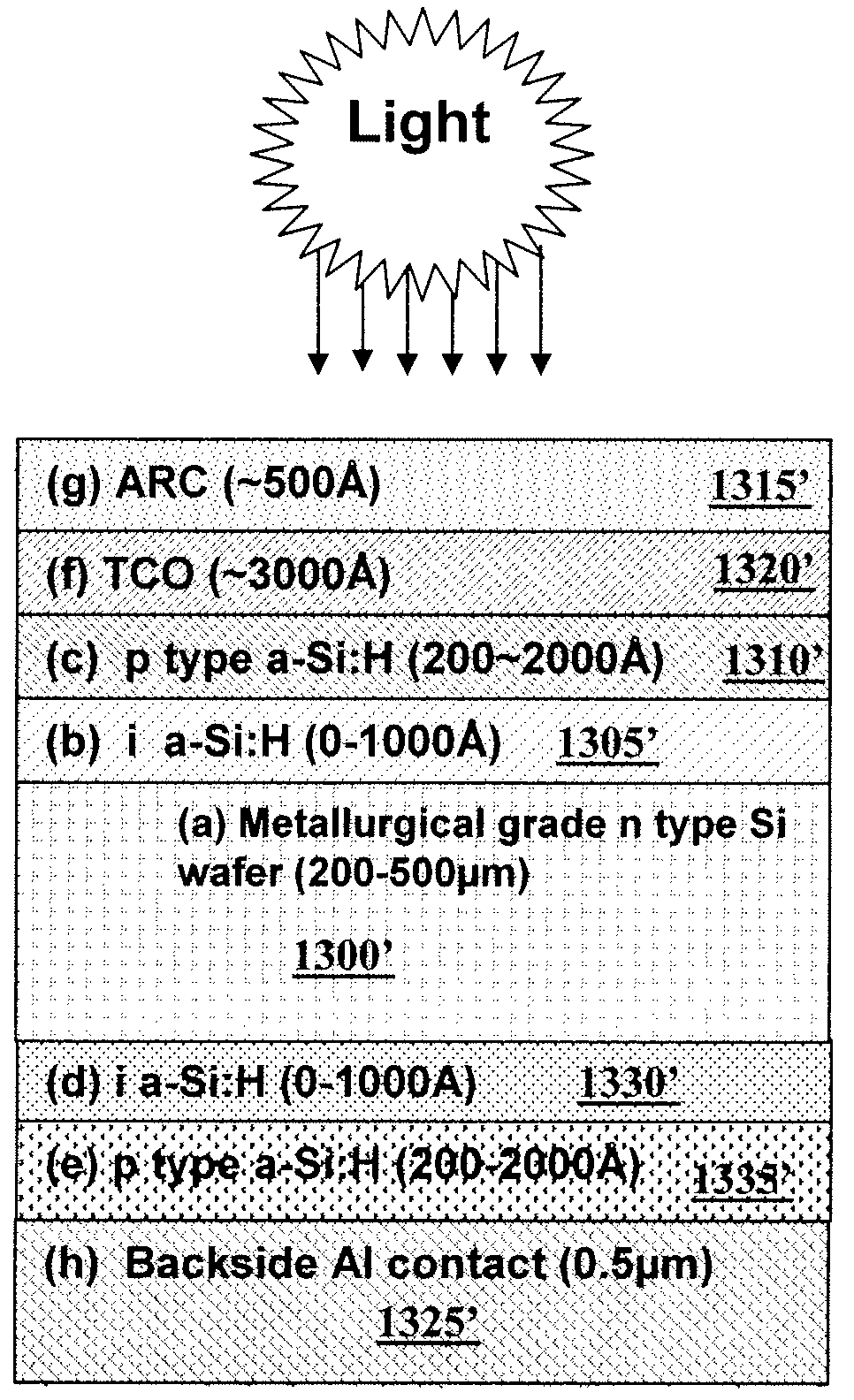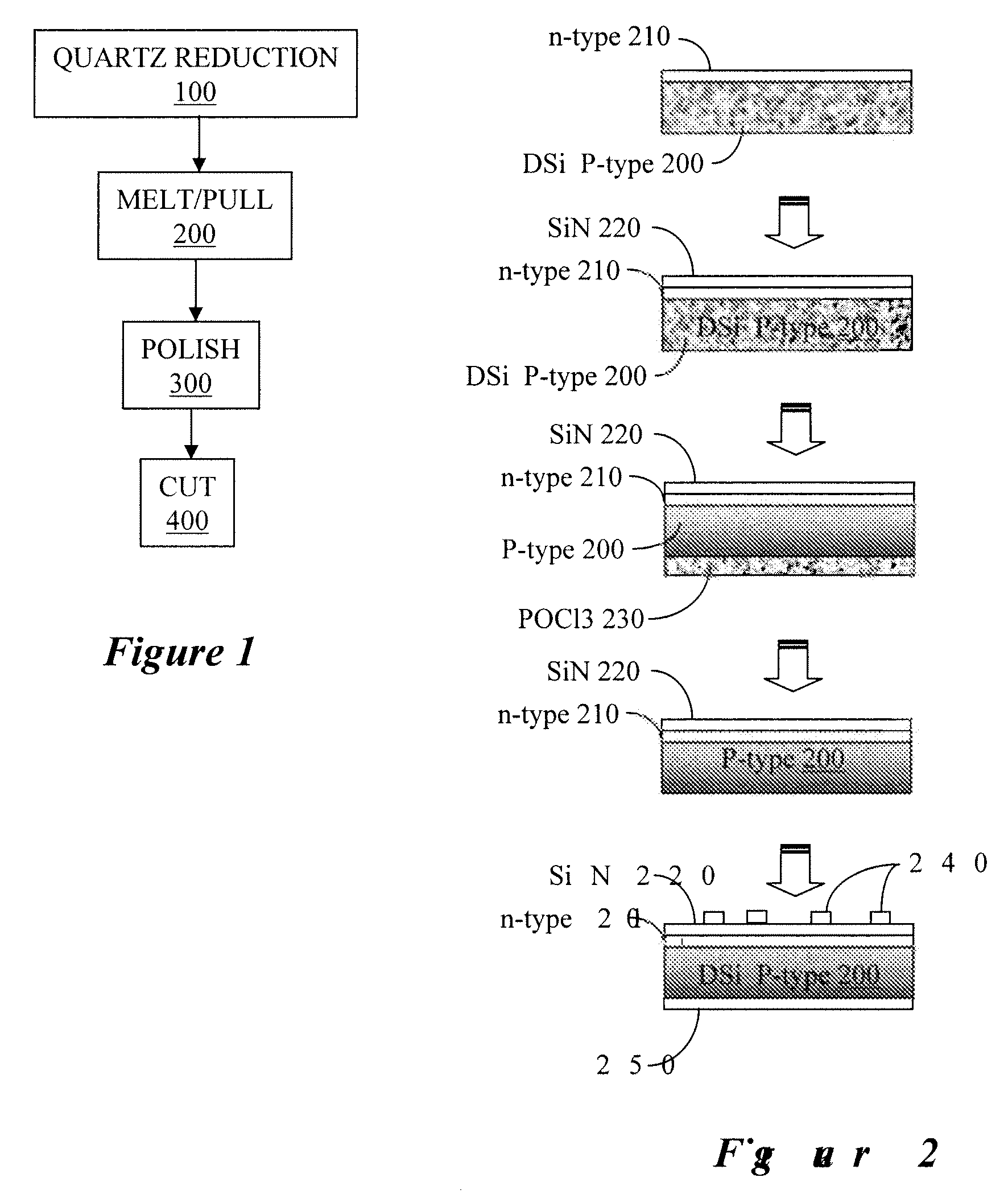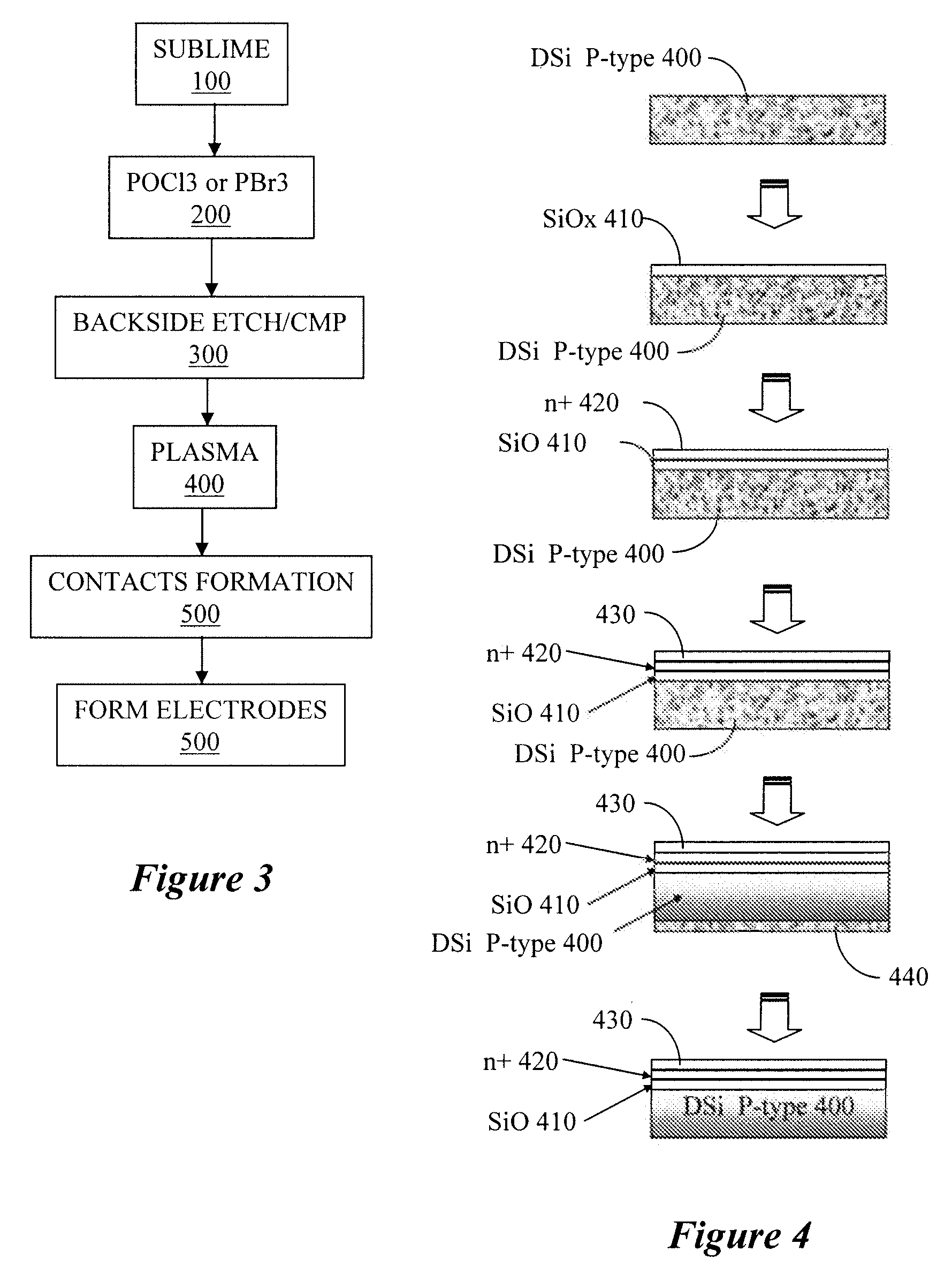Low-cost solar cells and methods for their production
a solar cell and low-cost technology, applied in the field of solar photovoltaic cells, can solve the problems of low conversion efficiency, high cost of solar cell fabrication, and inability to meet the potential of large-scale power generation of solar cells, so as to reduce the cost of substrate and film material, and reduce the cost of both substrate and film material. , the effect of low cos
- Summary
- Abstract
- Description
- Claims
- Application Information
AI Technical Summary
Benefits of technology
Problems solved by technology
Method used
Image
Examples
example i
[0062]Metallurgical grade silicon of three nines was produced by inductively melting silicon pellets of two nines in a graphite crucible of about 1.5 m×1.5 m, and then slowly cooling into a cylindrical shape over 24 hrs. The carbon-rich surface crust was removed, and the cylinder crushed into grains or pellets. The resulting material contained both B and P, but was generally p-type with resistivity in the range 0.1-1 ohmcm. The resulting material was then cast into metallurgical grade silicon ingot of about 0.5 m×1 m, with controlled cooling and dopant adjustment. Metallurgical grade silicon wafers were fabricated by machining 6 in. cores out from the ingot, the cylinder surface was smoothed and then 500 μm thick wafers were sawed off the cylinders. One surface was mechanically polished, and both surfaces were lightly etched to reveal the large polygonal grain structure on the back of the wafer. This resulted in about 500 metallurgical grade silicon wafers of four nines and five nin...
example ii
[0064]A single hetrojunction with an intrinsic passivation layer device structure is formed on low-cost metallurgical-grade substrates by depositing a nano-scale Si:H film stack on the front, i.e., “device” side, and an oppositely doped a-Si:H film on the back “contact” side. The metallurgical-grade substrates obviates the need and expense of aggressively thinning the substrate from 500 to 250 μm as is done for crystalline Si substrates. The thicker wafers provide more robust handling in automated process lines. This material also avoids the cost, cycle time and complexity of polysilicon based gasification, solidification, melt-and-pull process, since the active device is created by a thin Si:H film just outside of the metallurgical-grade substrates surface that is passivated by a nano-scale intrinsic a-Si:H film.
[0065]The metallurgical-grade substrates may be formed in standard, e.g., 6-in, 8-in, 12-in, sizes, which can be processed in standard semiconductor PECVD processing equipm...
example iii
[0066]FIG. 9A illustrates an example of a process for fabricating a solar-cell ready substrate, generally referred to herein as SmartSi™. In step 900 metallurgical grade quartz is melted and reduced in an electrolytic cell containing graphite electrode and is then let cool and solidify to provide a ingot of about two nines metallurgical silicon. The ingot is broken into pellets, treated in chemicals to leach surface impurities and then cast into ingot. The ingot is then striped of its crust and broken into nuggets of three to four nines metallurgical silicon. The resulting nuggets are sorted according to their resistivity.
[0067]The sorted nuggets of MG silicon are cast in step 915. The melt is allowed to solidify into an ingot, which in step 920 is machined, cut into wafers, and the wafers are polished. In step 925 a PECVD chamber is used to form a thin layer of intrinsic amorphous silicon, i-a-Si:H, to passivate the surface of the MG-Si substrate. In step 930 a PECVD chamber is use...
PUM
| Property | Measurement | Unit |
|---|---|---|
| thickness | aaaaa | aaaaa |
| thickness | aaaaa | aaaaa |
| thickness | aaaaa | aaaaa |
Abstract
Description
Claims
Application Information
 Login to View More
Login to View More - R&D
- Intellectual Property
- Life Sciences
- Materials
- Tech Scout
- Unparalleled Data Quality
- Higher Quality Content
- 60% Fewer Hallucinations
Browse by: Latest US Patents, China's latest patents, Technical Efficacy Thesaurus, Application Domain, Technology Topic, Popular Technical Reports.
© 2025 PatSnap. All rights reserved.Legal|Privacy policy|Modern Slavery Act Transparency Statement|Sitemap|About US| Contact US: help@patsnap.com



